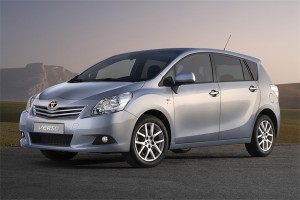
The crossover tradition at Toyota in Europe continues with the 2010 Versus.
In an early stage of automotive development, Toyota recognized the importance of crossover models and the Japanese came up with the Verso. The first generation, launched in the beginning of this decade as the Corolla Verso was a bit dull, but the second one called just Verso in some markets or Corolla Verso in others was received much better and sold well.
Now, on the eve of the Geneva auto show, Toyota unveiled the new Verso to a group of international media in a private event. There will be no press conference and unveiling at the show. Maybe it’s a sign of the recession-wracked times in Europe.
“I wanted Verso to offer a more dynamic drive. Most MPVs rate functionality over driving pleasure, so this is where Verso intends to stand out,” says Masato Katsumata, Senior Vice-President R&D of Toyota Motor Europe and chief engineer of the Verso. Since Toyota in Europe, or elsewhere for that matter, is not generally known for its driving dynamics, but rather its long-standing bias toward comfortable tuning, we’ll have to wait for a test drive to verify the claim.
With a combination of interior space, flexibility, practicality and comfort, the new Verso is a true mix of an MPV and a station wagon. Although we think that the third row of two seats is too tight to sit comfortably in, even if the second row is pulled forward all the way, making it a 5+2 or 4+2 depending on the size of the passengers.
The 7-seat Verso with the 2-liter D-4D diesel engine produces CO2 of only 140 g/km, said to be the lowest in the segment. The new Verso will arrive in European dealerships this May.
